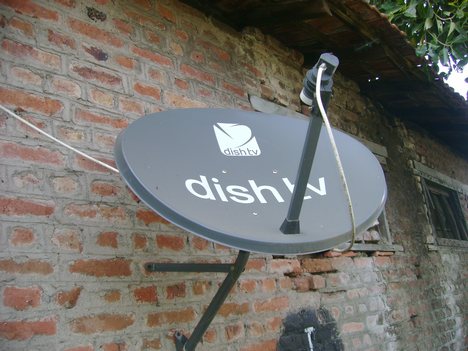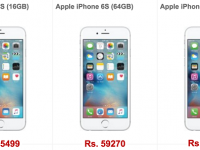We are well into the monsoons now and one of the many irritating issues faced by most of us today is the sudden loss of signal on DTH (Direct to Home) networks the moment it starts raining. This has been a contentious issue for many years with people lodging complaints about “poor service” during the rains resulting in lots of head banging and stressful moments.
Now, most of you might be aware that DTH signal attenuation IS a known issue with DTH. It is something that you have been told to live with. Also, it is only an issue for short periods of time and shouldn’t actually be a cause of much concern unless you are a hard core TV addict and cannot take your eyes off the screen even for a brief moment

But, have you ever wondered why only DTH is prone to this problem? Is there a technological workaround that companies can adopt to solve this minor irritant on what is arguably a leading technology? If yes, why aren’t they doing it? This sudden thought came to me yesterday when I made a casual tweet saying “They should make some anti-rain capable DTH”. Had some positive responses to the tweet and was forced to dig further into the issue and here are my findings.
The Ku Band issue
I am trying to keep this very simple here and avoiding all the jargons so the experts, please pardon me
As, you all might be aware DTH technology is a part of satellite communications. In its simplest form, a broadcasting company broadcasts its signal to an uplink centre. The uplink centre has an enormous dish antenna pointed towards a geostationary satellite to which it uplinks the signals. The satellite up there obviously has receivers (called transponders) that collect the uplinked data, convert them in to pre-determined frequencies and downlink them back to the earth. For DTH, these satellites typically use frequencies within the Ku band for this process.
There are other satellites, which transmit these broadcasts back at C band frequencies. C band however, requires larger dish antennas on the ground. The reason for using Ku band is because they require extremely small dishes (ranging from 60cm to 80cm in diameter) at the consumer level, the installation is much easier and the equipment used (like the set top boxes) are cheaper to manufacture. This is way better than using C band which require larger dishes and more expensive equipment. The only advantage of using C Band seems to be the fact “buying” bandwidth on C band (by DTH companies) is cheaper than on Ku band. But that’s just about it.
The problem with Ku Band
Now we come to the major issue. What happens to these Ku bands when it rains? Well to learn that we need to know what Ku band is. In simple terms, this band refers to broadcast signals that range between the frequencies of 10.95 GHz and 14.5 GHz. The wave length of waves in this band is quite short (about 2cm). When any wave passes through the atmosphere and encounter water droplets it will cause some attenuation. This attenuation is exaggerated when the droplet “hits” the wave when it reaches half the wavelength in its diameter. This problem is common to all waves however, in case of waves in the Ku band, the degree of attenuation is far greater than those observed in other frequencies with greater wave lengths. Therefore, the moment it starts raining, there is chance of the signal being interrupted.
Yeah, but how do we fix this?
Is there a way around this? Well, unfortunately no. Even networks that use the slightly higher frequency Ka bands are susceptible to this issue. One way out is the use of superhydrophobic surfaces for antennas used for DTH reception. As the name suggests, surfaces with these coatings will be highly water resistant. This method doesn’t guarantee a fix – but only reduces the effects. In simpler terms, this is known as the lotus effect. If you have observed the leaves of the lotus plant, you will notice that its surface never gets wet. This happens because of a natural effect (which will be too complex to describe here). More on that here. So, using an antenna with a superhydrophobic coating could help improve things. Other than that it seems unless we switch to some other frequencies for DTH broadcasts, this issue is here to stay!
So, the next time you call up your DTH helpline the moment the signal goes blank during rains, let us inform you that it is an exercise in futility.






WOW!! Great Article truly liked it! THIS Coming from a NON-DTH User.
I was aware that DTH conks during rains. But was never THIS aware about the “Cause”.
Great Going.
I am going to share this link on FB.
Alap, Non DTH user? Last time I checked, I did have a DTH service at home 😛